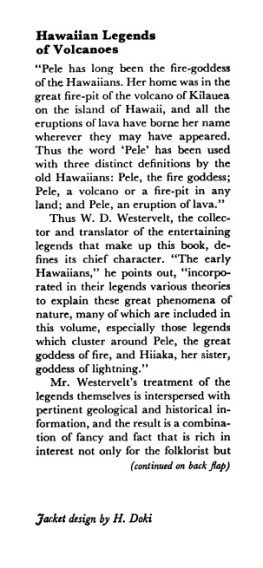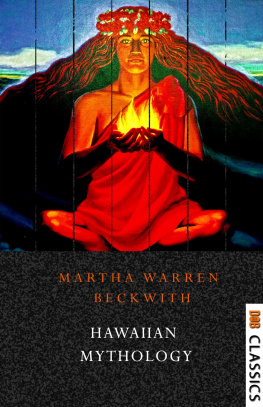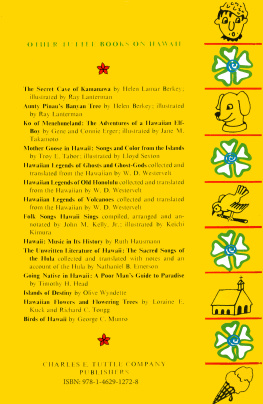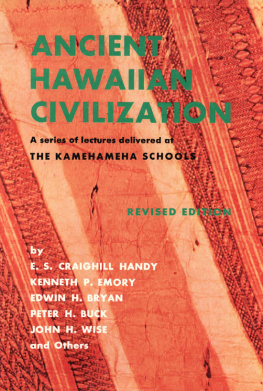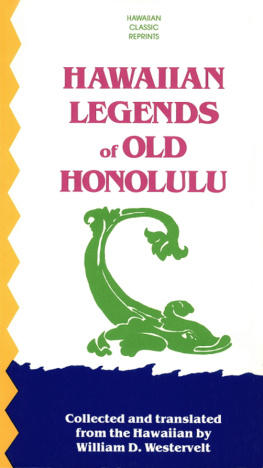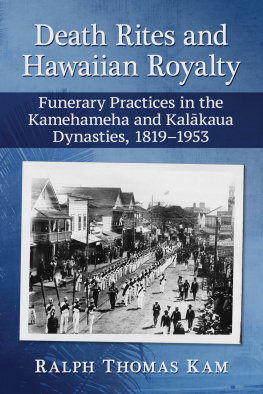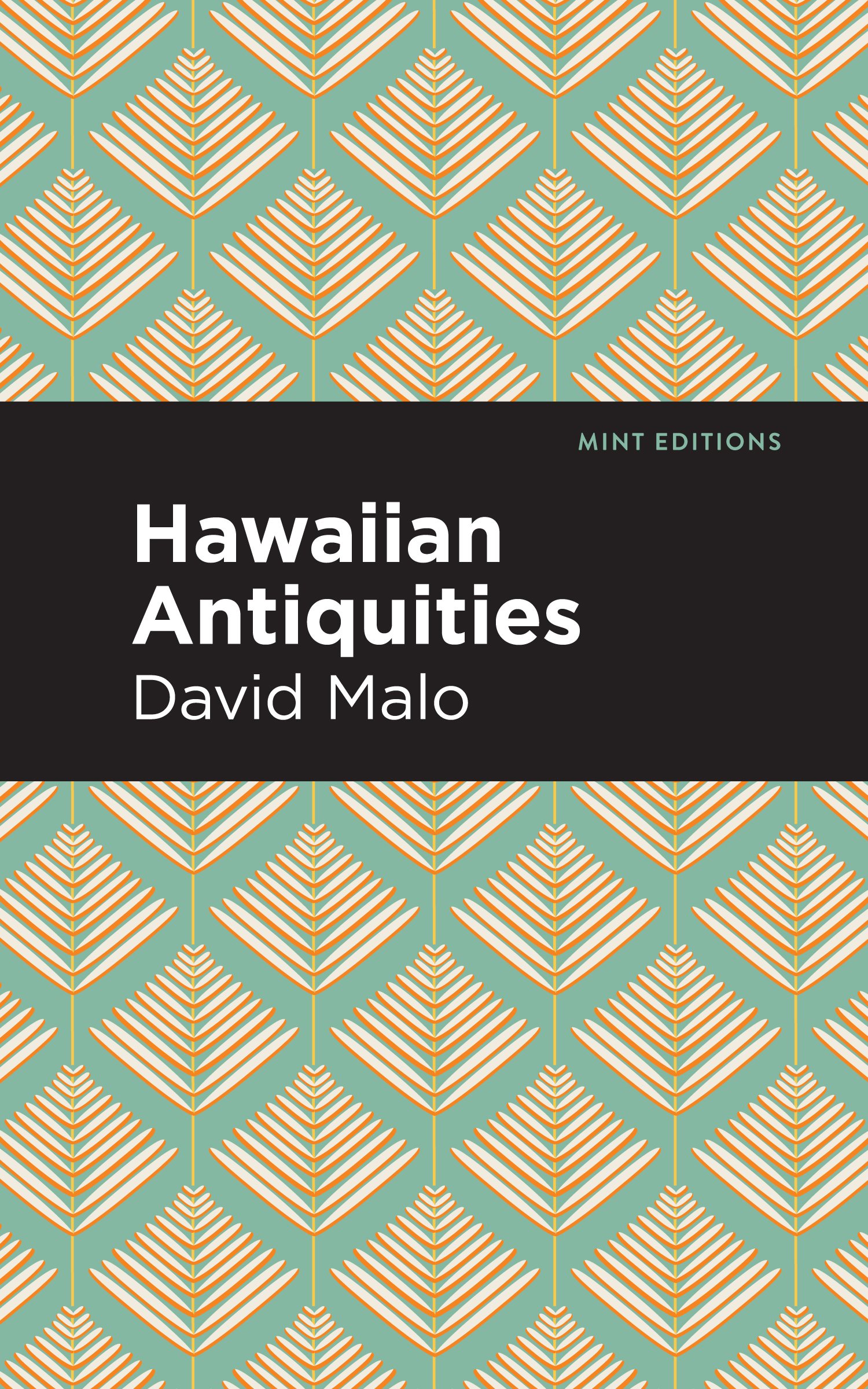Contents
Guide
Pagebreaks of the print version
Hawaiian Antiquities
(Moolelo Hawaii)
David Malo

Hawaiian Antiquitieswas first published in 1898.
This edition published by Mint Editions 2021.
ISBN 9781513299532 | E-ISBN 9781513223872
Published by Mint Editions

MintEditionBooks.com
Publishing Director: Jennifer Newens
Design & Production: Rachel Lopez Metzger
Project Manager: Micaela Clark
Translated By: Dr. N.B. Emerson
Typesetting: Westchester Publishing Services
To
Bernice Pauabi Bishop
The Mother of Hawaiian Industrial Education
I Dedicate this Volume in appreciation of her efforts to keep alive a knowledge of the Antiquities and Mysteries of Hawaiian History
CONTENTS
LIST OF ILLUSTRATIONS
.INTERIOR VIEW OF CABLE OF HAWAIIAN HOUSE
.TENON AND MORTISE JOINING RAFTERS, OA, OF ROOF TO THE UPRIGHTS, POU, OF THE SIDE OF THE HOUSE, ALSO RIDGEPOLE, IN SECTION
.MANU, FIGURE-HEAD OF CANOE, ORDINARY STYLE
.LELE-IWI, FIGURE-HEAD SOMETIMES USED FOR DISPLAY
.THE MAKAHIKI IDOL OR AKUA LOA
.MARKS ON THE FACE INDICATING A KAUWA RANK
BIOGRAPHICAL SKETCH OF DAVID MALO
I t is a commentary on the fleeting character of fame and human distinction that, even at this short remove from the life of one of Hawaiis most distinguished sons, it is with no little difficulty that one can obtain correct data as to the details of his career; it is also an index of the rapidity with which the plough-share of evolution has obliterated old landmarks.
The materials from which this sketch of David Malos life is pieced together have been derived from many sources, both oral and written, as will be indicated in the course of the narrative.
Malo was the son of Aoao and his wife Heone, and was born at the seaside town of Keauhou, North Kona, Hawaii, not many miles distant from the historic bay of Kealakeakua, where Captain Cook, only a few years before, had come to his death. The exact year of his birth cannot be fixed, but it was about 1793, the period of Vancouvers second visit to the islands. It was the time of a breathing spell in the struggle for military and political supremacy over the entire group in which the chief actors were Kahekili, the old war-horse and veteran of Maui, Kalanikupule, his son, the weak and ill-fated king of Oahu, and Kamehameha, the oncoming conqueror of the group.
Aoao, the father, was attached as a follower in some capacity to the court and army of Kamehameha and moved west with the tide of invasion; but I have found no evidence that his travels took him so far as Oahu, which was the western limit of his masters operations.
During his early life Malo was connected with the high chief Kuakini (Governor Adams), who was a brother of Queen Kaahu-manu, and it was during this period specially that he was placed in an environment the most favorable to forming an intimate acquaintance with the history, traditions, legends and myths of old Hawaii, as well as with the meles, pules and oils that belong to the hula and that form so important and prominent a feature in the poesy and unwritten literature of Hawaii. But his attainments in these directions are even more to be ascribed to his happy endowment with a shrewd and inquiring mind as well as a tenacious memory, which had to serve in the place of writing and of all mnemonic tablets. If we may trust the authority of the writer of a brief sketch of Malo (See The Polynesian of Nov. 5, 1853), it was largely from association with one Auwai, a favorite chief of Kamehameha I, who excelled in knowledge of Hawaiian lore, including an acquaintance with the genealogies (kuauhau) of the chiefs, the religious ceremonials under the tabu system, and the old myths and traditions, that Malo was enabled to acquire his knowledge of these matters. In ancient Hawaii it was at the kings court that were gathered the notable bards, poets, and those in whose minds were stored the traditional lore of the nation.
Brought up under circumstances well fitted to saturate his mind with the old forms of thought and feeling, it would be surprising if he had not at some time given evidence of ability in that form of composition, the mele, which represents the highest literary attainment of the old regime. Such a production by him we have,a threnody celebrating the death of the beloved regent, Queen Kaahumanu, who died June 5, 1832. It is entitled, He Kanikau no Kaahumanu, a poem of real merit that combines in itself a large measure of the mystery of ancient pagan allusions with a tincture of such feelings as belong to one newly introduced to the stand-point of a Christian civilization. (A copy of this poem will be found in The Friend of Aug., 1859, together with a translation by C. J. Lyons.)
Such good use did Malo make of his opportunities that he came to be universally regarded as the great authority and repository of Hawaiian lore.
As a natural result of his proficiency in these matters, Malo came to be in great demand as a raconteur of the old-time traditions, meles, and genealogies, as a master in the arrangement of the hula, as well as of the nobler sports of the Hawaiian arena, a person of no little importance about court. In after years, when his mind had been impregnated with the vivifying influence of the new faith from across the ocean, his affections were so entirely turned against the whole system, not only of idol-worship, but all the entertainments of song, dance and sport as well, that his judgment seems often to be warped, causing him to confound together the evil and the good, the innocent and the guilty, the harmless and the depraved in one sweeping condemnation, thus constraining him to put under the ban of his reprobation things which a more enlightened judgment would have tolerated or even taken innocent pleasure in, or to cover with the veil of contemptuous silence matters, which, if preserved, would now be of inestimable value and interest to the ethnologist, the historian and the scholar.
It is a matter of vain regret from the stand-point of the student that this should have been the case, and that there should not have survived in him a greater toleration for the beauties and sublimities, as well as the darker mysteries, of that unwritten literature, which the student of today finds dimly shadowed in the cast-off systems of heathendom. But it is not to be wondered at that David Malo should have been unable to appreciate at its true value the lore of which he was one of the few repositories. It could be expected only of a foreign and broadly cultivated mind to occupy the stand-point necessary to such an appraisal. The basis of this criticism will be evident to every attentive reader of this book.
The attitude of David Malos mind toward the system of thought - from which he was delivered, the pit from which he was digged, as some would put it, was, from the circumstances of the case, one of complete alienation not to say intolerance, and gives ground for the generalization that it is hopleless to expect a recent convert to occupy a positon of judicial fairness to the system of religion and thought from which he has been rescued. While this may be reckoned as a tribute to the depth and sincerity of his nature, it cannot but be deemed an index of the necessarily somewhat narrow view of the mystic and the convert. The application of Malos energies to the task of setting forth in an orderly manner his knowledge of the history and antiquities of his people was due to the urgent persuasions of his teachers, and shows their broad-minded appreciation of the value of such information.


